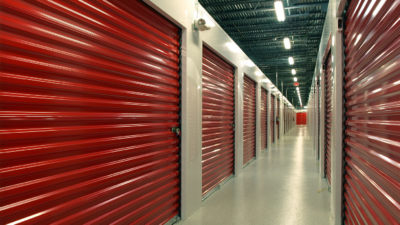In a recent post, I discussed the many adaptive reuse strategies that have been successfully utilized in repurposing vacant big-box retail stores back to productive service. But another, even larger, asset class is under siege. The mall, once the number one shopping choice for many, as well as a community gathering place, has come under fire. Arguably, e-commerce has taken a share of sales away from physical stores, but changing habits and preferences are also to blame. The Millennial generation spends less on things and more on experiences and the Generation Z cohort following in their footsteps appears to want more of the same.
The Future of Shopping Malls
A recent study by Credit Suisse forecasts that 20 to 25 percent of malls will close over the next five years – between 220 and 275 properties. Although Class A malls, located near an affluent customer base, are doing fine, Class B & C properties are in trouble. As online sales continue to rise, there is just too much physical retail space in the U.S.
The U.S. leads the world in retail square footage with 24 square feet per capita. Major European economies record only a fraction of that total. Furthermore, on a per capita sales per square foot basis, the U.K., France and Germany squeeze higher sales out of much less space, suggesting a much more efficient allocation of resources.
So the question is the same I asked of vacant big box stores: what will we do with the existing inventory of closed malls, along with the many more to come in the future?

Repurposing Mall Properties
Across the country, failing malls have been in the process of reinventing themselves. Some successful strategies have included conversion to office buildings, such as Google Glass’ headquarters in the former Mayfield Mall in Mountain View, CA and Ford Motor Company’s move to Fairlane Town Center in Dearborn, MI. In Nashville, TN, Vanderbilt University Medical Center leased over half of the 850,000-square-foot 100 Oaks Mall for administrative offices and clinical purposes.
Other uses have included lifestyle centers, mixed use development, educational uses, mega-churches and even micro-apartments in America’s oldest mall, Westminster Arcade, in Providence, RI. Of course, industrial is in the mix as well. Since consumers are traveling less to the mall and buying more goods online, why not repurpose mall properties as distribution and fulfillment facilities?
From Mall to Fulfillment Center
Never one to shy away from big ideas, Amazon is doing just that. In the southeastern Cleveland suburb of North Randall, the massive online retailer has announced a plan to construct an 855,000-square-foot fulfillment center on the 69-acre site of the former Randall Park Mall. Once the largest mall in America, Randall Park closed in 2009 and was partially demolished in 2014. It was also the top employer and a major source of tax revenue in this small community. Amazon expects to hire more than 2,000 people, many of whom are local residents.

The same developer, Atlanta-based Seefried Industrial Properties, Inc., has also finalized the purchase of another Cleveland area dead mall, Euclid Square, located 20 miles north of North Randall in the lakefront community of Euclid. There was much speculation about the property being the site of a second Amazon fulfillment center. A recent announcement confirmed that Amazon will indeed by the end user of a 650,000-square-foot building that can be expanded to 1,000,000 square feet.
This location strategy makes a lot of sense. With the pressure for ever quicker delivery times and greater efficiencies in the supply chain, locating distribution centers closer to customers is a logical choice. Malls usually have easy access to and from major transportation networks and are located near a large population base, which can supply a ready source of labor. And where else would one find a 60 to 100-acre site in a densely populated area to accommodate a large big-box industrial facility?
The Destroyer Saves the Day
The irony, of course, is lost on no one. Amazon, the biggest player in e-commerce, has been a major factor in disrupting the retail landscape. A record number of stores will close this year and, as mentioned above, forecasts call for a large percentage of shopping malls to shut down over the next few years. Yet, like Kali, the Hindu goddess of destruction and rebirth, Amazon is playing both destroyer and redeemer in these northeast Ohio communities.
Could we see more failed retail properties resurrected and put to use servicing the new way of shopping?
An architect turned broker turned researcher with a life-long curiosity about the built environment, Loren analyzes trends and data to provide insight to brokers and clients. He is passionate about making sense of the numbers and creating a value proposition through the story that they tell.

 Loren DeFilippo
Loren DeFilippo
 Craig Hurvitz
Craig Hurvitz
 Aaron Jodka
Aaron Jodka